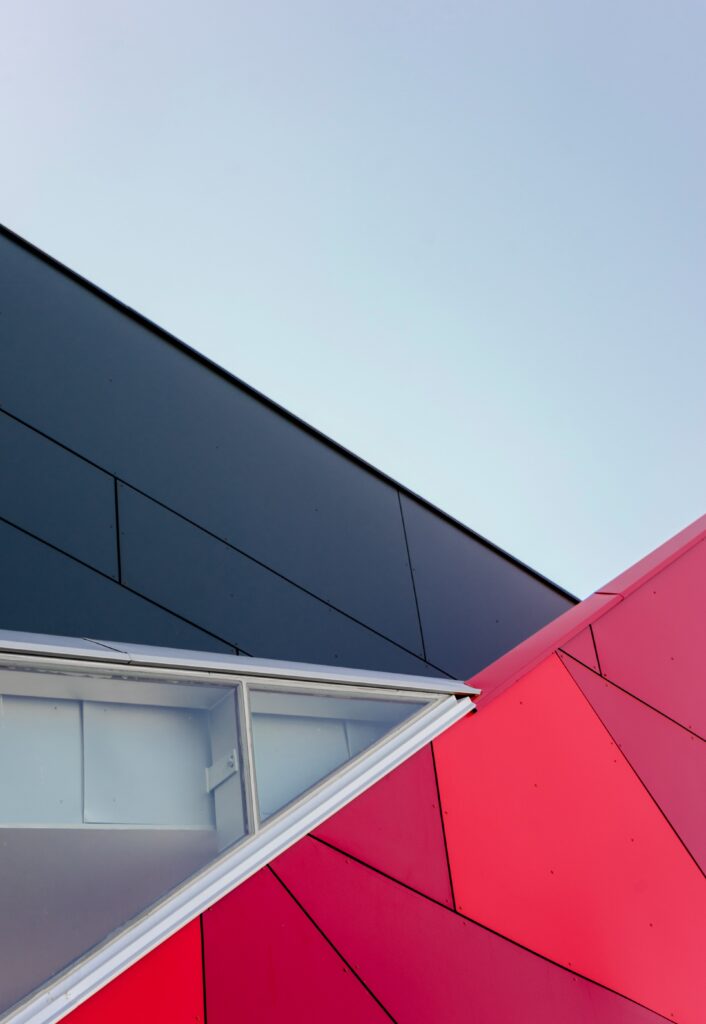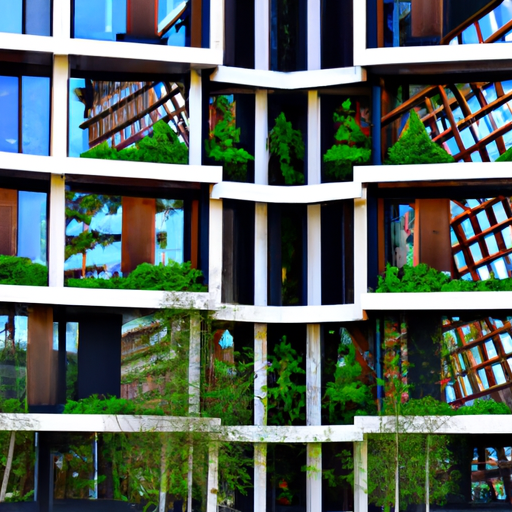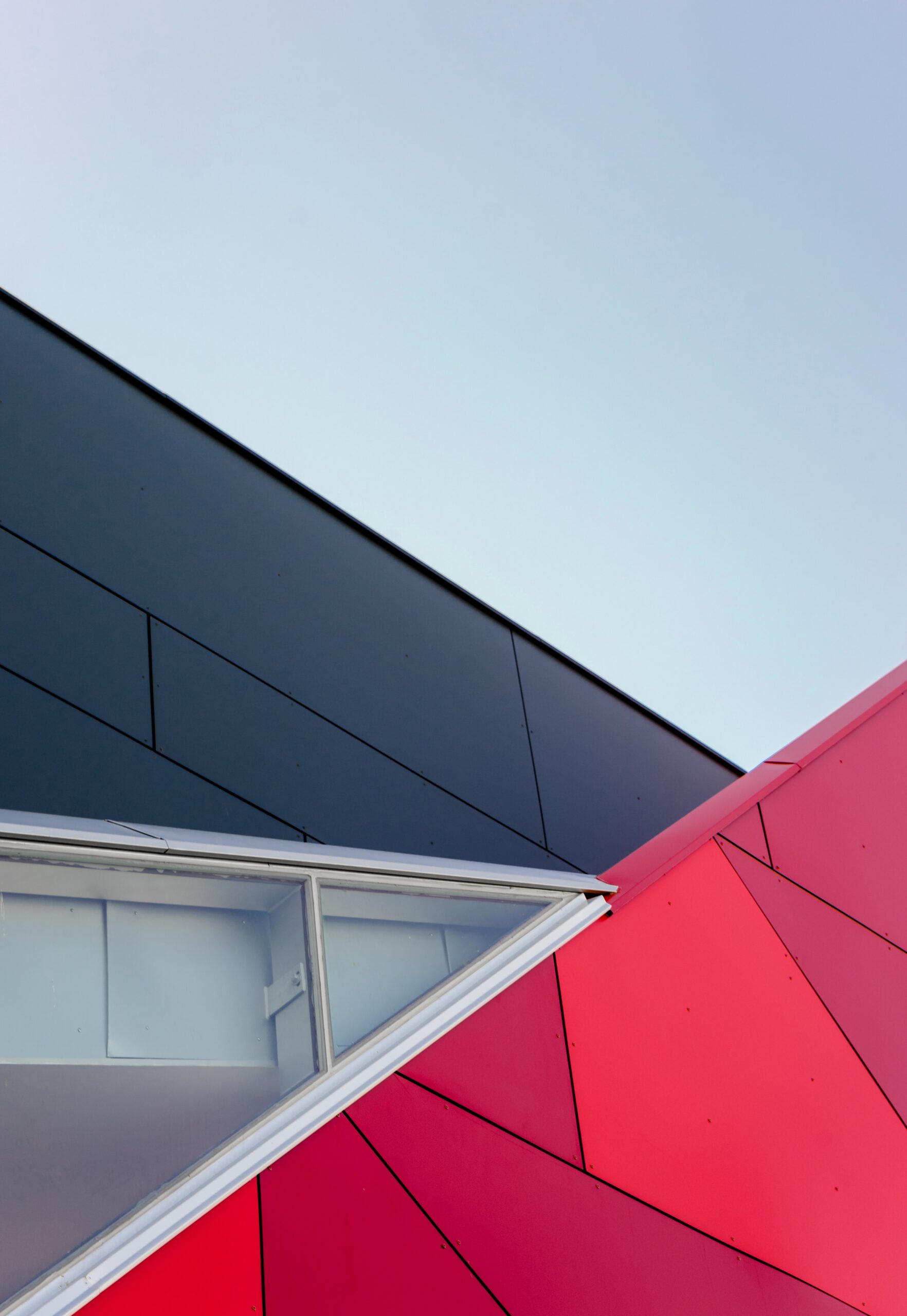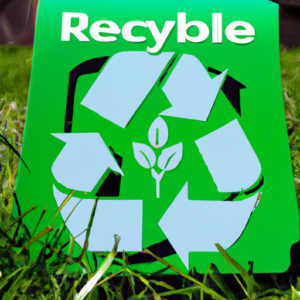How Does Self-Sustaining Architecture Differ From Traditional Architecture: Introduction
In the world of architecture, there exists a fascinating concept known as self-sustaining architecture. This innovative approach to design and construction seeks to create structures that not only serve their intended purpose but also have minimal impact on the environment. Self-sustaining architecture is a departure from the traditional methods of construction, which often prioritize functionality and aesthetics above sustainability. But how does self-sustaining architecture differ from traditional architecture?
By incorporating features such as renewable energy sources, waste management systems, and efficient insulation, self-sustaining architecture presents a promising solution to the ever-growing global challenges of climate change and resource depletion. So, let’s explore the key differences between self-sustaining architecture and traditional architecture, and discover the possibilities that lie within this exciting field.
Check Out Our Top Eco Friendly Product Picks On Amazon Here
Definition of Self-sustaining Architecture
Self-sustaining architecture is an innovative approach to building design that aims to create environmentally friendly and energy-efficient structures. It focuses on integrating various elements and systems that enable buildings to function independently from external sources, such as the grid, by generating their own energy and minimizing resource consumption.
Energy Independence
One of the key aspects of self-sustaining architecture is achieving energy independence. This means that buildings are designed and equipped with renewable energy systems that allow them to generate their own power. By utilizing solar panels, wind turbines, or other renewable energy technologies, these buildings can meet their own energy needs without relying on fossil fuels or traditional energy sources.
Resource Efficiency
Self-sustaining architecture also emphasizes resource efficiency. This involves maximizing the use of available resources, such as water and materials while minimizing waste. By implementing efficient water management systems and sustainable construction practices, self-sustaining buildings aim to reduce resource consumption and promote a circular economy approach.
Environmental Considerations
Environmental considerations play a significant role in self-sustaining architecture. Building designs and materials are chosen with a focus on reducing the environmental impact throughout the entire lifecycle of the structure. This includes selecting eco-friendly materials, utilizing passive design strategies, and implementing systems that mitigate or eliminate harmful emissions, such as carbon dioxide.
How Does Self-Sustaining Architecture Differ From Traditional Architecture: Design Principles
In order to achieve the goal of self-sustainability, several design principles are essential to be implemented in architectural projects.
Passive Solar Design
Passive solar design is a fundamental principle of self-sustaining architecture. By strategically positioning windows, shading devices, and insulation, buildings can maximize natural daylight, minimize heat gain or loss, and reduce the need for artificial lighting and mechanical heating or cooling systems. This approach harnesses the power of the sun to provide optimal comfort and energy efficiency.
Rainwater Harvesting
Water scarcity is a global concern, and self-sustaining architecture addresses this challenge by incorporating rainwater harvesting systems. These systems collect and store rainwater for non-potable uses, such as irrigation, toilet flushing, and cooling. By reducing the reliance on municipal water supplies, self-sustaining buildings contribute to water conservation efforts and reduce the strain on local water resources.
Green Roofs
Green roofs, also known as living roofs, are another design principle in self-sustaining architecture. They involve the installation of vegetation on the roof surface, providing numerous benefits. Green roofs improve the insulation properties of buildings, reducing energy consumption for heating and cooling. They also help mitigate stormwater runoff, improve air quality, and provide green spaces in urban environments.
Natural Ventilation
Natural ventilation is a key design principle that helps maintain comfortable indoor environments while reducing energy consumption. By strategically placing windows, vents, and openings, self-sustaining buildings can take advantage of natural airflow and cross-ventilation, minimizing the need for mechanical ventilation systems. This approach not only reduces energy demand but also enhances indoor air quality and occupant well-being.
Fossil Fuel Reduction
Self-sustaining architecture aims to minimize or eliminate the use of fossil fuels for heating, cooling, and electricity generation. This can be achieved through the integration of renewable energy technologies, such as solar panels, wind turbines, and geothermal systems. By shifting away from fossil fuel dependence, self-sustaining buildings contribute to the reduction of greenhouse gas emissions and combat climate change.
Check Out Our Top Eco Friendly Product Picks On Amazon Here
How Does Self-Sustaining Architecture Differ From Traditional Architecture: Advantages
Self-sustaining architecture offers numerous advantages that make it a compelling choice for building design.
Reduced Energy Consumption
By implementing energy-efficient design principles and utilizing renewable energy sources, self-sustaining buildings significantly reduce energy consumption. This not only lowers the environmental impact but also results in substantial cost savings for the occupants or owners. Reduced energy consumption also contributes to overall energy conservation efforts, promoting a more sustainable future.
Lower Operating Costs
With energy independence and reduced energy consumption, self-sustaining buildings enjoy lower operating costs compared to traditional architecture. By generating their own energy and relying less on the grid, buildings can avoid increasing utility costs and unpredictable energy price fluctuations. This makes self-sustaining architecture an economically viable option in the long run, providing financial stability and sustainability.
Minimal Environmental Impact
Self-sustaining architecture prioritizes environmental considerations, leading to a minimal environmental impact. By integrating renewable energy systems, utilizing sustainable materials, and implementing resource-efficient practices, these buildings significantly reduce carbon emissions, water consumption, and waste generation. This approach fosters a healthier planet and contributes to the global effort to combat climate change and preserve natural resources.
How Does Self-Sustaining Architecture Differ From Traditional Architecture: Challenges
While self-sustaining architecture offers numerous benefits, it also faces certain challenges that need to be addressed for wider implementation.
Initial Cost
Implementing self-sustaining architecture often entails higher initial costs compared to traditional construction methods. The integration of renewable energy systems, sustainable materials, and specialized design features can lead to increased upfront expenses. However, it is important to consider the long-term financial benefits and cost savings that self-sustaining buildings offer, which can offset the initial investment over time.
Technological Limitations
The adoption of self-sustaining architecture is sometimes limited by the availability and maturity of certain technologies. For instance, the efficiency and reliability of renewable energy systems, such as solar panels or wind turbines, can vary depending on geographic location and weather conditions. Additionally, advancements in energy storage and smart grid technologies are necessary to achieve consistent and efficient energy management in self-sustaining buildings.
Maintenance Requirements
Self-sustaining buildings may require specialized maintenance and monitoring systems to ensure optimal performance. Regular inspections, upkeep of renewable energy systems, and monitoring of resource consumption are essential to ensure continued self-sustainability. It is important for building owners to be aware of the ongoing maintenance requirements and allocate necessary resources for proper upkeep.

How Does Self-Sustaining Architecture Differ From Traditional Architecture: Comparisons
Self-sustaining architecture stands out in several aspects when compared to traditional architecture.
Energy Efficiency
Self-sustaining buildings prioritize energy efficiency through passive design strategies, renewable energy generation, and minimal energy consumption. Traditional buildings typically rely heavily on mechanical systems for heating, cooling, and lighting, resulting in higher energy consumption. By embracing energy-efficient practices, self-sustaining architecture leads the way in reducing energy demand and promoting sustainable living.
Environmental Impact
Traditional architecture often contributes significantly to environmental degradation through high energy consumption, carbon emissions, and resource depletion. Self-sustaining architecture, on the other hand, prioritizes minimizing environmental impact by utilizing renewable energy sources, promoting resource efficiency, and implementing sustainable practices. This sets self-sustaining architecture apart as a more environmentally conscious approach to building design.
Dependency on Grid
Traditional buildings heavily rely on the grid for electricity, water supply, and other essential services. In contrast, self-sustaining architecture aims to reduce or eliminate this dependency by generating its own power, harvesting rainwater, and implementing resource-efficient systems. This level of independence offers resilience during grid disruptions, reduces strain on utility infrastructure, and promotes sustainable living even in remote areas.
Integration of Technology in Self-sustaining Architecture
Technology plays a crucial role in the success and efficiency of self-sustaining architecture.
Smart Home Systems
Smart home systems offer homeowners the ability to optimize energy use, monitor resource consumption, and control various building functions remotely. These systems can automate lighting, heating, ventilation, and air conditioning (HVAC) systems, ensuring optimal energy efficiency and comfort. Integration of smart home technologies enhances the overall performance of self-sustaining buildings and empowers occupants to actively participate in energy conservation efforts.
Renewable Energy Technologies
Renewable energy technologies, such as solar panels, wind turbines, and geothermal systems, are integral components of self-sustaining architecture. Advances in these technologies have made them more efficient, cost-effective, and visually appealing, allowing for seamless integration into building designs. The utilization of renewable energy sources further strengthens the energy independence and sustainability of self-sustaining buildings.
Optimization and Automation
The integration of optimization and automation technologies enables self-sustaining buildings to operate at peak efficiency. This includes automated lighting and shading systems, occupancy sensors, and energy management systems. By continuously monitoring and adjusting building functions based on occupancy and energy demand, these technologies minimize waste and optimize energy consumption, further enhancing the sustainability and self-sufficiency of the structure.

Case Studies of Self-sustaining Architecture
Self-sustaining architecture is more than a trend; it’s a necessity in our rapidly evolving world. By focusing on energy efficiency, sustainable materials, and innovative design, these buildings and developments show a commitment to reducing their environmental footprint.
The question often arises: “How does self-sustaining architecture differ from traditional architecture?” Traditional architecture often overlooks long-term sustainability and resource management, whereas self-sustaining architecture prioritizes these factors from the outset.
The advancements in self-sustaining architecture are not limited to one region or country. Architects and planners worldwide are increasingly asking, “How does self-sustaining architecture differ from traditional architecture?” They are finding innovative answers through the design and implementation of buildings and communities that prioritize sustainability. Here are additional global case studies that expand our understanding of what self-sustaining architecture can achieve.
The Eden Project, UK: Merging Education with Sustainability
Situated in Cornwall, UK, the Eden Project is a fascinating blend of architectural marvel and ecological education. The site features a series of geodesic domes that house thousands of plant species, each representing a different global climate. It uses rainwater harvesting, energy-efficient design, and sustainable building materials to reduce its environmental footprint. Unlike traditional architecture, which may not consider long-term environmental consequences, the Eden Project was designed to co-exist harmoniously with its natural surroundings. It also aims to educate the public about sustainable living and the potential of self-sustaining architecture.
Pixel Building, Australia: An Icon of Energy Efficiency
Located in Melbourne, the Pixel Building is a stunning example of how self-sustaining architecture can drastically reduce energy consumption. Unlike traditional architecture that often lacks a comprehensive energy plan, this building boasts a 105% energy efficiency rating, meaning it generates more energy than it consumes. It uses solar panels, wind turbines, and a green roof to manage energy needs effectively. The Pixel Building also employs an advanced facade system that optimizes natural daylight and controls thermal gain, reducing the need for artificial lighting and temperature regulation.
Bahrain World Trade Center: Harnessing Natural Resources
In the heart of Manama, Bahrain, the Bahrain World Trade Center stands as an icon of sustainable design in a region rich in oil but arid in climate. One of the most striking features of this building is its integration of large wind turbines between its twin towers. This goes beyond the usual solar panels and showcases how self-sustaining architecture can creatively harness natural resources. The wind turbines generate a significant amount of the building’s electrical needs, making it a remarkable deviation from traditional architecture’s dependency on fossil fuels.
Earthship Biotecture, USA: Off-the-Grid Living
In Taos, New Mexico, Earthship Biotecture offers a radical answer to the question, “How does self-sustaining architecture differ from traditional architecture?” These homes, made primarily from recycled materials like old tires and soda cans, are designed to be entirely off the grid. Solar panels provide electricity, and rainwater is collected and filtered for all the home’s water needs. Additionally, Earthship homes are designed for natural temperature regulation, reducing or even eliminating the need for heating and cooling systems. These structures show that self-sustaining architecture can also be accessible and applicable at the individual household level.
The Crystal, London: A Marvel of Self-Sustaining Design
The Crystal in London stands as an exemplary model of what is possible when self-sustaining architecture principles are applied. Unlike traditional architecture, which often relies heavily on external energy sources, The Crystal aims for energy independence.
It employs an array of solar panels that not only generate electricity but also contribute to the building’s aesthetic value. Ground source heat pumps work efficiently to regulate the building’s temperature. This complex also utilizes a design layout that maximizes natural light, thereby reducing the necessity for artificial lighting during the day.
Overall, The Crystal serves a dual purpose: it is both an operational building and an educational center that encourages discussions on sustainable development and, more specifically, answers the question, “How does self-sustaining architecture differ from traditional architecture?
Masdar City, UAE: Pioneering a New Way of Urban Living
Located in the United Arab Emirates, Masdar City stands as a testament to the future of self-sustaining architecture and urban planning. Unlike traditional urban centers that grow organically, often without a long-term plan for sustainability, Masdar City has been designed from the ground up to be one of the most sustainable places on Earth.
Its energy infrastructure includes an assortment of renewable energy technologies, from solar panels to wind turbines. These features are augmented by a district cooling system that efficiently manages the energy needs of the city. Urban design that incorporates high-density planning, green spaces, and smart transportation systems contributes to reduced energy consumption and a more sustainable lifestyle for its residents. Masdar City answers the question of “How does self-sustaining architecture differ from traditional architecture?” by showcasing a well-integrated, holistic approach to sustainability.
BedZED, UK: Creating a Sustainable Community
BedZED (Beddington Zero Energy Development) in the UK is more than just a collection of buildings; it’s a vibrant community that embodies the essence of self-sustaining architecture. This contrasts sharply with traditional architecture and urban planning, which often treat sustainable features as afterthoughts or add-ons.
BedZED focuses on fostering a sense of community while minimizing its environmental impact. Green roofs help in temperature regulation and provide additional recreational spaces, while combined heat and power (CHP) systems work in conjunction with energy-efficient construction methods to minimize waste.
Additionally, the community features rainwater harvesting systems that reduce the dependency on external water supplies. BedZED serves as a tangible model for how community-level efforts can make significant strides toward self-sustainability and offers insights into how self-sustaining architecture can become more mainstream.
These case studies highlight the practical and transformative power of self-sustaining architecture. They serve as compelling examples that not only challenge the status quo but also demonstrate the real-world effectiveness and benefits of adopting sustainability as a foundational principle in architectural design.
How Does Self-Sustaining Architecture Differ From Traditional Architecture: Future Trends
Self-sustaining architecture is not static; it continually evolves in response to technological innovations and shifting societal needs. As we look to the future, the question “How does self-sustaining architecture differ from traditional architecture?” will have increasingly nuanced answers. Here are some anticipated trends that are expected to redefine self-sustaining architecture in the years to come.
Net-Zero Buildings: The Future of Energy Efficiency
The concept of net-zero buildings is slated to move from the periphery to the mainstream in self-sustaining architecture. Unlike traditional buildings that are often energy sinks, net-zero buildings aim to generate as much energy as they consume. With ongoing advancements in renewable energy technologies like solar panels, wind turbines, and energy storage systems, achieving net-zero status is becoming more feasible. New building design practices that incorporate advanced insulation methods and energy-efficient appliances will further contribute to this trend. As a result, net-zero buildings will be instrumental in helping cities and nations meet their carbon neutrality targets, thereby fostering more sustainable living environments.
Intelligent Grid Systems: Pioneering Smart Energy Management
The integration of intelligent grid systems will bring a new dimension to self-sustaining architecture. These smart grids will enable a two-way dialogue between buildings and the broader energy grid. In traditional architecture, energy generally flows unidirectionally from the grid to the building. However, smart grids allow for bi-directional flow, enabling buildings to not only consume energy but also contribute excess energy back to the grid. This creates opportunities for energy trading among buildings, which could financially incentivize energy conservation. By incorporating smart grids, self-sustaining buildings will not only become more energy-efficient but will also increase their resilience against power outages and other system failures.
Circular Economy Approaches: Redefining Resource Efficiency
A major trend on the horizon for self-sustaining architecture is the adoption of circular economy principles. Traditional architecture often follows a linear model—extract, build, and dispose. This approach is resource-intensive and wasteful. On the contrary, a circular economy approach encourages architects to design buildings and systems that minimize waste and maximize resource efficiency. This could involve using sustainable or recycled building materials, modular designs that can be easily updated rather than replaced, and building systems that can be disassembled and reused. Such practices make self-sustaining architecture even more sustainable by aiming for a regenerative impact on the environment.
In summary, the future of self-sustaining architecture is brimming with potential. As these trends take shape, they will offer increasingly sophisticated and effective answers to the question of how self-sustaining architecture differs from its traditional counterparts. With the focus shifting from merely reducing harm to actively contributing to environmental well-being, self-sustaining architecture is set to become an integral part of our global sustainability efforts.

Conclusion: The Transformative Power of Self-Sustaining Architecture
A Paradigm Shift in Design Principles
Self-sustaining architecture is not merely an update or an add-on to traditional architecture; it represents a paradigm shift in how we think about building design and construction. Unlike traditional buildings, which often lack a comprehensive approach to sustainability, self-sustaining architecture places energy independence, resource efficiency, and environmental considerations at the forefront of design decisions. This marks a significant departure in principles, answering the question, “How does self-sustaining architecture differ from traditional architecture?” in both ethos and implementation.
Advantages Over Traditional Architecture
The benefits of adopting self-sustaining architecture are numerous and meaningful. One of the most immediate advantages is reduced energy consumption, which in turn leads to lower operating costs. Over the life cycle of the building, these savings can be substantial, mitigating the often higher initial costs associated with implementing sustainable technologies and materials. Moreover, the minimal environmental impact of these buildings—achieved through the use of renewable energy, efficient waste management, and other green practices—positions self-sustaining architecture as a responsible choice for our planet.
Challenges and Obstacles
While the shift toward self-sustaining architecture is promising, it is not without challenges. Initial construction costs can be higher due to the specialized materials and technologies involved. There may also be technological limitations, particularly in the areas of energy storage and efficiency. However, these obstacles are surmountable, and ongoing research and innovation in the field are making self-sustaining solutions more accessible and effective.
The Role of Technology and Future Prospects
Technological advancements are integral to the growth and effectiveness of self-sustaining architecture. As renewable energy technologies become more efficient and affordable, and as intelligent systems like smart grids become more sophisticated, self-sustaining architecture will only grow in feasibility and impact. This integration of technology is one of the key ways in which self-sustaining architecture differs from traditional forms, enabling it not just to minimize harm but to actively contribute to a more sustainable future.
Shaping a Sustainable and Resilient Future
In summary, self-sustaining architecture stands as a compelling answer to some of the most pressing challenges of our time, including climate change, resource depletion, and environmental degradation. Through its focus on energy efficiency, minimal environmental impact, and reduced dependency on external energy sources, it offers a blueprint for how we can build more sustainably and resiliently. With continued advancements in technology and design, self-sustaining architecture is well-positioned to lead us into a future where buildings are not just places to live or work, but active participants in global sustainability efforts.




